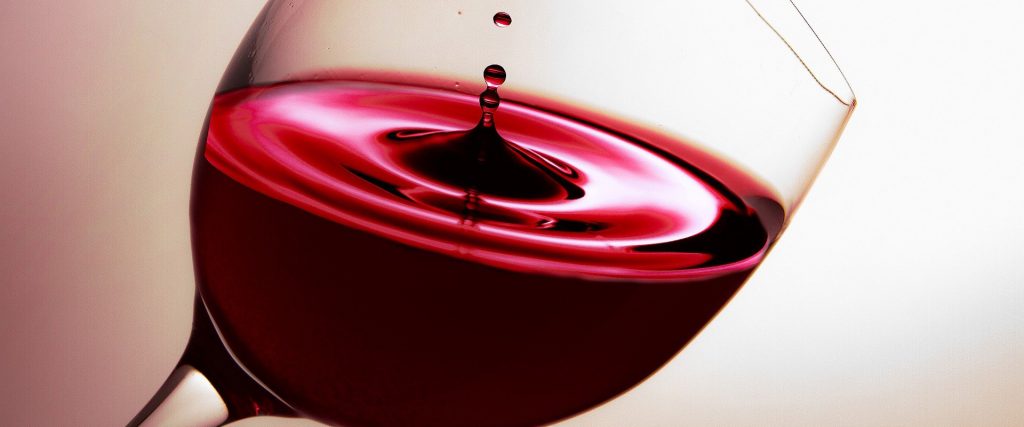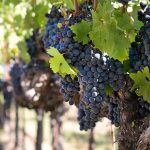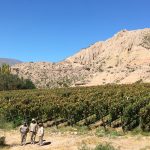Argentina has a secret to produce impossible wines: within a relatively brief geographic area, climatic conditions can vary wildly because of differing altitudes, meaning that the equivalents to regions that are very far apart elsewhere in the world are effectively side by side. For instance, in the Uco Valley you’ll find the grape varieties that made of the names of Burgundy and Bordeaux, but also Rhône and Moselle. It’s as though all of Europe has been squeezed into 50 miles.
This means that winemakers in Argentina are able to do some pretty wild things with classical models. The resulting possibilities have inspired creative oenologists to push the boundaries of flavour, blending varieties into styles that would be impossible elsewhere. Just for starters, the wine market in Argentina boasts a few blends of Pinot Noir and Malbec.
Such blends really caught the eye of several Masters of Wine when they visited Argentina in 2018. For instance, Gualtallary in the Uco Valley is an excellent region for red blends because Pinot Noir, Cabernet Franc and Petit Verdot all ripen very easily there.
So, today Argentina offers a series of blends that offer unusual but compelling flavour combinations. Below are a few of the most interesting:
Bordeaux style with an Argentine twist
Around here, Cabernet Sauvignon, which is king in Bordeaux, tends to be replaced by Malbec, backed up by Cabernets Sauvignon or Franc, sometimes with a hint of Merlot. The result is a Bordeaux-style blend with a local twist, in which the core of the wine is mellow with gentle tannins, enlivened by the other two varieties which structure the palate and also lend a unique aromatic profile, especially when Franc is involved. Wines is this style very much worth trying include: Teho El Corte 2018, a Malbec with 40% Cabernet Sauvignon; Toso Barrancas and Cheval des Andes 2018, which are made in the same ratio; Chañar Punco 2016, which is 30% Cabernet Sauvignon and 10% Merlot, and Carrascal Corte Clásico 2015, a Malbec with 35% Cabernet Sauvignon and 25% Merlot. The latter is one of Luján de Cuyo’s historic blends.
The Calchaquí variation
In northern Argentina, producers regularly turn to a classic equation: majority Malbec with lesser portions of Cabernet Sauvignon and Tannat in which the latter adds freshness and herbal aromas to the spice and jam of the former two. It works. Textbook examples include Piloto de Prueba 2020 (50%-25%-25%), A. Pepa Blend 2018 (70%-15%-15%) and El Porvenir Icono 2016 (70%-20%-10%).
Malbec-Franc
This blend is increasingly popular. These grapes fit together like puzzle pieces: where one is gentle, the other is rustic, where one is voluminous, the other is taut and tense, where one is floral and fruity, the other is fruity and herbal. And so on. Among blends with a modern profile, this is the perfect example of stylistic renewal. These wines will give you a good idea of what we’re talking about: Texto Súbito 2019 (60%-40%) and Rompecabezas Blend 2018 (65%-35%).
Malbec-Syrah & Malbec-Bonarda
A pair of popular blends found mostly in the middle price range. In both cases, the idea is to complement the volume of the Malbec with less expensive grapes that add a little exoticism. This is especially true of the Syrah, while Bonarda delivers a hint of raspberry. Because neither has strong tannins they don’t alter the terse texture of the Malbec. Good examples are Tikal Natural 2017 Malbec with 40% Syrah, and El Hijo Pródigo Blend Malbec-Bonarda 2017, which is 50-50.
OTHER HORIZONS FOR IMPOSSIBLE WINES
Some Argentine blends are more unusual and daring still, Argentine oenologists are forever restless, constantly coming up with fascinating combinations, each with their own story.
Italy & France
A characteristic of Malbec is that when it’s ripe it can lose some of its freshness. With Sangiovese, however, the opposite is true. 1410 hectares of the latter variety are planted in Argentina and this unusual blend delivers sour cherry and freshness while maintaining the grapes’ character and taut palate. This is very much true of Tano 2018, a Malbec with 20% Sangiovese and a little Syrah and Merlot.
Bordeaux & Loire whites
One of the trends in white wines is for ever more refined blends. The newest include a blend of Sémillon and Chenin. Evoking the history of a kind of wine that was often served in traditional taverns, today these whites are in the vanguard of a larger process of renewal. It’s as though the Loire and Garonne had come to Mendoza. The idea is to combine the texture and depth of the Sémillon with the unusual perfume and heightened freshness of the Chenin. Their names speak to the blend’s storied history: Catena Histórico 2018 and Altos Las Hormigas Blanco, who also invert the ratio with their Chenin-Semillón 2020.
Thinking along similar lines, Santa Julia Nacional 2020 explores a Semillón-Torrontés blend.
New whites
Some winemakers are combining varieties from very different corners of the world to produce something absolutely new and intriguing, the product of nothing but their unfettered imagination: for instance, there’s Vallisto Extremo 2019, which mixes Riesling with Ugni Blanc to produce a wine as exotic – as though the Moselle ran through Cognac – as it is compelling, and the highly unusual Lurton Corte Friulano 2019, which mixes mostly Tokay with Sauvignon Blanc.
Rather than being isolated examples, these wines are actually part of a growing trend. White blends now see Chardonnay sharing a billing with Sauvignon Blanc and Semillón in Lagarde Proyecto Hermanas White Blend 2018, while in Bianchi White Blend 2020 it is combined with Viognier and Moscato Bianco.
As you can see, there’s a rich and very creative seam of blends in Argentina that are bound to delight anyone looking for something a little different in their glass; a potentially revelatory experience.



